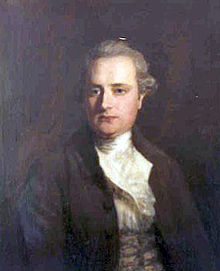Went to Geelong today. The Geelong Cats are one of the best AFL clubs in the country and therefore in the World! Yes you know, there are no AFL clubs of any note outside Australia, or indeed outside the State of Victoria. The "model" that I am posing with, stands along the Geelong promenade with 47 other statues as part of a wonderful art theme, following the port's history.
Our AFL model represents all the good things that AFL brings to the region and he is positioned in Transvaal Square, where the lads would practice the game in the early days. Football, remember, came from Britain in its earliest form and would have arrived at the port.
You know that the British took football to Australia, so therefore footy was first evolved in Victoria State.
One of the headlands guarding Port Phillip Bay, the entrance to Melbourne harbour, is called Point Nepean. Nepean also appears on a highway and a river. There are also Nepean names in New South Wales and South Africa, Canada and India.
So who was Nepean? He was the Right Honorable (Sir) Evan Nepean (below) who in 1802 had the point named after him, as a British politician and colonial administrator, Under Secretary of State to the Home Department.
Born in July 1752 in Saltash, Cornwall whose father was an innkeeper, Nicholas Nepean. He was one of three children. Evan rose through military ranks, the Admiralty and so on, to become a Baronet (an excuse by the king to take money off a wealthy land owner), Canon of Westminster and Chaplain in Ordinary (exactly what it says!) to Queen Victoria.

Two generations later, Charles Nepean, was recorded in the London 1861 census as being a pupil at Charterhouse School in London. This was before the school moved out of the grim city to the lush pastures of Godalming.
Charles was born in Mayfair in 1851, the youngest of 13 children and died in Kent in March 1903, only 52 years old.
After Charterhouse he went to University College, Oxford and then into the church in Lenham, Kent. Related to this string of Nepeans is HUGH GRANT-actor!
Tomorrow we get to the footbally bit.
No comments:
Post a Comment